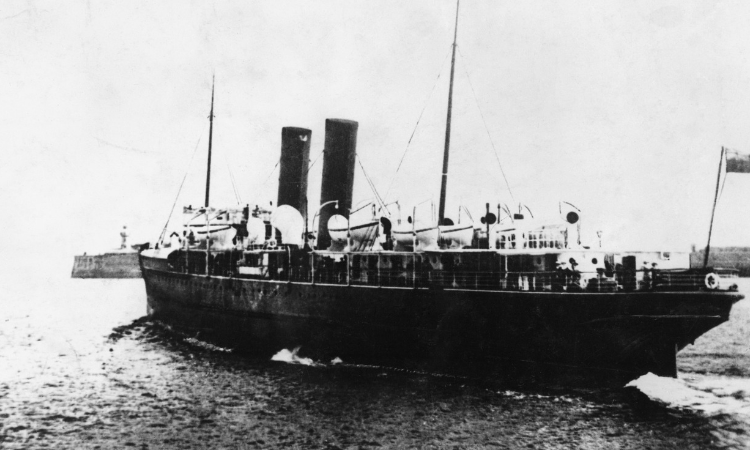10 October 2018
The 100th Anniversary of the sinking of the RMS Leinster

The RMS Leinster © IWM HU66000
Events in Ireland will mark the 100th anniversary of the greatest ever loss of life in the Irish sea.
On the morning of 10 October 1918, there must have been a feeling of cautious optimism on board the Leinster – a mail-ship belonging to the City of Dublin Steam Packet Company.
The war was in its final months and many of those on board were servicemen and women returning from leave.
There was always a risk of attack by submarine – since 1917 Germany had pursued a policy of unrestricted U-boat warfare in a desperate attempt to win the war – but the Leinster’s captain and crew were experienced, she bore camouflaged paint and with a gun for defence placed on her stern, manned by a Royal Naval gun-crew, her passengers and crew no doubt felt relatively safe as she left harbour just after 9am.
The weather was fine but the sea was rough as she left Kingstown Pier (now Dun Laoghaire) for Holyhead. It was a journey she had made many times before.
Shortly before 10am, without warning, a torpedo whistled past her bow. Just seconds later a second torpedo hit her on the port side. Attempting to turn, the ship was hit again – this time on the starboard side. The engine room was blown out and within 13 minutes she had sunk.
Lifeboats were launched and SOS messages sent but the survivors struggled in the rough seas.
Rescue vessels arrived about an hour after the sinking but despite their best efforts hundreds died. Modern estimates put the figure as high as 565.
The crew of the German submarine (UB-123) would also become casualties sometime later – the vessel lost with all hands while returning to her home port.
Many of those who died on the Leinster are commemorated by the CWGC at cemeteries and memorials in the United Kingdom and Ireland – where events will mark the 100th anniversary of the sinking.
Almost 150 officers and men whose bodies were recovered are buried at Grangegorman Military Cemetery in Dublin, 142 officers and men, one nurse and one civilian messenger are commemorated on the Hollybrook Memorial, Southampton and 39 of the crew are named on the Merchant Navy Memorial at Tower Hill in London. Others of the dead are buried elsewhere in Ireland and England.
Among those who lost their lives that day was Josephine Carr – the first member of the Women's Royal Naval Service (WRNS) killed on active duty.
The Women's Royal Naval Service (WRNS) was the women's branch of the Royal Navy. Formed in 1917, it was disbanded in 1919, and then revived in 1939 at the beginning of the Second World War. It remaining active until the WRNS were integrated into the Royal Navy in 1993. WRNS worked in many roles including cooks, clerks, wireless telegraphists, radar plotters, weapons analysts, range assessors, electricians and air mechanics.
Josephine was the daughter of Samuel and Kathleen Carr who lived at 4 Bethesda Road, Cork, Ireland. She enlisted in the WRNS on 17 September 1917, and worked as a shorthand typist.
On 10 October, 1918, she and two fellow Wrens boarded the Leinster. She was seen last by her friend Maureen Waters sitting in the reading room at the time that the ship cast off.
Josephine's body was never recovered and she is commemorated on panel 31 of the CWGC Plymouth Naval Memorial.

